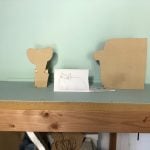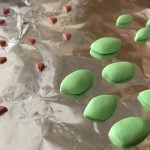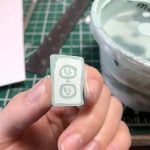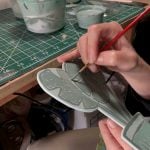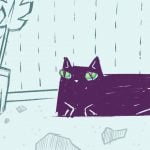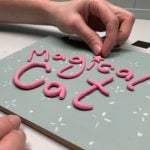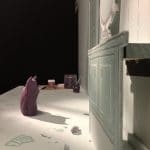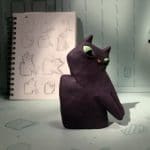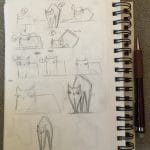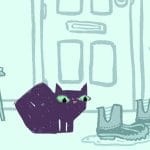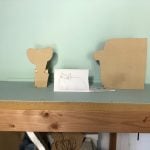At some point in the last five years, feline fanatics seemed to go from the private pastime of watching their cat for hours, to the more public and hugely popular, watching cat videos all across the internet for hours and hours. Our pick this week is a series with genesis in both phenomenons. “Magical Cat is mostly inspired by our cat, the internet’s love of cat videos, and our love for the old school, animated interstitials from networks like Nickelodeon and Saturday morning cartoon blocks,” said Threadwood’s Scott DaRos & Alexis Deprey.
“The idea came about during the initial COVID-19 lockdown when we were looking to create something that would be quick to shoot, easy to set up, and fun to work on so that if we wanted to, we could turn it into a series. We targeted this approach because we were simultaneously helping to start a group called Animation Wild Card with our animation friends at Catalyst Castle and Apartment D which had the objective of gathering animated shorts from quarantined animation professionals and releasing them as episodes. Another part of the goal was to produce the animation without leaving our home, so we tried using only the materials we had lying around from previous projects.”
The series is brilliantly simple, focusing on the intrinsic entertainment value of living with a cat. What more do you need? The pared down aesthetic of Magical Cat works quite well, especially because the duo are particularly observant of the graphic lines their cat creates. “We loved our cat and found him endlessly entertaining, and so even though we were originally only going to do a single episode, we knew we’d have a continuous supply of inspiration if we wanted to keep going. Our cat, like most cats, made a lot of crazy shapes that were always changing and were very boxy and angular (we’d sometimes refer to his “kitty pajamas” when he made particularly odd shapes).
“He gave us a lot of ideas, but we decided that an animation of the cat barfing a little hairball would be a perfect start because it would be a good opportunity to use stylized, angular shapes to show a cat in a pleasant and relaxed pose quickly change to the ungraceful, heaving pose. It would also give us some freedom to explore an efficient animation style that’s a bit more like 2D animation. We always have a ton of clay on hand because it’s our favorite material to animate, so that was a no-brainer.”
The clay allowed the team to morph the cat shapes on the fly, another benefit being that a clay puppet like Magical Cat wouldn’t require molding, casting, armatures, or costume making so it’s quicker to set up than your typical stop motion puppet. “The purple color came from having an excess of obnoxious blue and red that we weren’t going to use for anything else. For the eyes and nose of the cat, we mixed up some Sculpey and baked it. The cat is set up like Gumby–some face pieces stuck on a big wad of clay. The eyes were an interesting challenge. Usually stop-motion eyes are balls that move around in a socket, or they’re fixed with waxed pupils that slide around. Magical Cat’s eyes are oddly shaped, curved, and need to change size a lot. We figured out that we could simply cut pupil shapes out electrical tape.
Magical Cat’s episodic nature combined with the mission of working only with what they had at home produced some creative results over time. “We’ve always loved the style of the old Paddington Bear stop-motion series which used flat, illustrated cutouts for sets and secondary characters, so we wanted to try something similar. For each episode, we sketch out the set design to see what we can re-use and what we have to build new. The sets and props are built from varying thicknesses of MDF, and the smaller pieces and props are built using styrene.
“We have special premixed paint just for Magical Cat, so touch up and new props come together quickly. A very low tech solution for exchanging props on the set is sticking them to a variety of reusable wood/mdf blocks that are protected with black tape, so swapping props by adding/removing hot glue is quick and easy (the other secret is a bit of 70% rubbing alcohol to loosen the hot glue if it’s stubborn).”
When it comes to animation, what seems seamless on screen is never the whole story. For Magical Cat, the clay was a common source of trouble. “Animating clay is always difficult”, Threadwood told us. “If it’s not going smoothly, claymation can become dirty, messy, and very, very stressful. The cat’s silhouette morphs a lot, and it can be time consuming to figure out and sculpt those transitions. We tried sculpting the different shapes beforehand to make it an easier, replacement style animation, but with a pure clay puppet without an armature, it’s impossible to predict the exact shape you’ll need when it comes time for the replacement. We sketch the shapes beforehand so we at least have a plan and know what we’re aiming for, but for every shape change, we have to pull him out and sculpt a new body. So sometimes the animation phase can take a little longer than we anticipate.”
As a personal project, it was possible that Magical Cat would get shoved aside as paid work kept flowing in, but the DaRos & Deprey had some useful insights on how to make that work: “We do take on animation jobs outside of our personal work, and it can be hard to squeeze Magical Cat in between paid gigs. It’s a task to stay organized and on schedule, but we’ve become pretty efficient with Magical Cat. We have a production schedule and bankers boxes full of props and cat assets.
“A lot of that training and expertise to keep ourselves motivated and on target came from working at major stop motion studios in Los Angeles in creative leadership roles. That experience has helped us to recognize how and when to cut creative as well as how long tasks should take. It also helped give us a good foundation in other technical aspects of stop motion production.”
We noticed that, while simple, the lighting is an aspect of the show that seemed to improve over time. The pair said that they, “kept very simple at first by using only two lights. But we took steps to improve the quality with each episode, and eventually we planned some episodes that required special lighting. To do this, we added a Dragonframe DDMX to our kit so we could control the lights from Dragonframe. But there’s not a one-size-fits-all guide for unique stop-motion lighting situations, so we needed some help from our lighting friends to figure out how to graduate from simple, static lights to more elaborate setups with features like animated fire lighting.”
To wrap up their generously in-depth look at their process, the team dug into sound design, as one of the last steps of their production process. “It’s hard to track down sound effects for things like cat paws batting a pencil or clawing at a gift. So if we can’t find a good match, we’ll sometimes record ourselves (we’re actually making the cat barf sounds in the first episode, and we’re the ones freaking out about a bug in the background of episode 3). We’ve also opted to use sounds of our cat from home videos for most of the purrs, chirps, and coos–he had a pretty unique cat language, so working to clean up recorded audio from our phones has made us learn how to get creative with sound design and disguising audio flaws.”
Magical Cat appears regularly on the Threadwood Youtube channel. For more behind the scenes take a look at the image gallery below:

